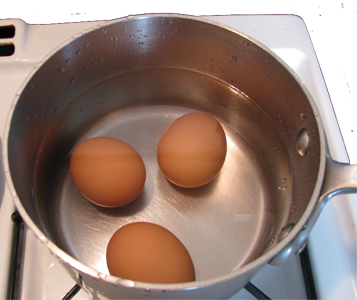
Eggs are a great source of protein and good brain fats. They make a wonderful snack in the form of a hardboiled egg. Hardboiled eggs are easy to bring on the go. For kids that are not allergic to eggs, they can be eaten cold, are a good finger food, and an easy source of nutrients. But hardboiled eggs are a bit plain, boring, and let’s face it, stinky. How to get your child to like hardboiled eggs? Make them fun and cool!
Egg Molds

To make hardboiled eggs fun and brighten up your child’s lunch, try egg molds! They come in many shape and sizes: heart, star, bunny, bear, car, and fish. They make them for quail eggs and chicken eggs – the quail eggs are adorable! Use extra large or jumbo when you use chicken eggs. Serve them with a dipping sauce or color them with beet juice or other natural color.
How to add to the cool factor? Make sure the yolk is not green. To avoid the characteristic sulfur smell and green yolk, do not overcook them. If you child is particularly sensitive to smells, do not put them in a container that they have to open themselves – the smell of sulfur is strong when first opened. Add some salt for flavor, or provide a mayonnaise for dipping such as a pumpkin mayonnaise. [stextbox id=”grey”]Always remember to look for eggs from pastured hens. These eggs will be significantly richer in good fatty acids and nutrients. [/stextbox]They originate from the modern application of bento, a Japanese tradition. Bento is a single-portion lunch usually put into small containers or sections. It is often made with rice, meat, and a serving of vegetable. Today, bento for kids is about making your (to-go) food visually appealing, and egg molds are one great way to do this. You can get egg molds online, often from Japanese importers. (www.ichibankanusa.com online and in San Francisco)
How to Make

To make the eggs, first cook an extra large hardboiled egg (or several). Make sure to not overcook it or the outside of the hard yolk will be green and it will smell very sulfurous (and unpleasant) – not cool for a kid at school. To cook the perfect egg, put the eggs in a pot with cold (room temperature) water. Do not stack eggs or overcrowd pot. Bring to a boil slowly, once simmering lightly for one minute cover and turn off heat. They will cook in the very hot, almost boiling water, for 10-12 minutes.
Once the egg is done, peel the egg and press it into one side of egg mold, then close the mold and plunge into cold water for 10 minutes. Since plunging it in cold water also helps to stop cooking it, the egg molds help ensure the perfect hardboiled egg. Once complete, open the mold and you’re done! Serve with salt or a dipping sauce.
For a Pumpkin Mayo Dipping Sauce: use 2 parts mayonnaise, 1 part pumpkin puree, and some gluten-free pumpkin pie spices (cinnamon, ginger, allspice, and nutmeg) and salt, adding a bit of milk or juice to thin to dipping consistency.[/stextbox] Tips: If you find your egg hard to peel, use your “older “eggs for hardboiling and freshest making mayonnaise or other forms of eggs. I find my fresh-from-the-farm eggs that are only a few days old are very hard to peel—the membrane sticks to the white and does not peel cleanly. If you find your yolks not in the center, roll the eggs around in a circular motion in the bottom of the pan as they are cooking (this will get the yolk to settle in the center). For extra credit you can “color” your finished (shelled) egg—my favorite is dying a heart shaped egg pink. To do this: Boil 8 ounces of water, add ¼ red cabbage and simmer for 2 minutes. Take off heat and cool to bathtub temperature, add 1 teaspoon of lemon juice, and place egg in colored water for several minutes until desired color is reached. Try egg molds! You may be surprised. Your finicky one may be getting more nutrition and protein before you know it. For more creative ideas to feed picky eaters, order your copy of Cooking to Heal.





This is really cute, definitely anything that makes food fun for picky eaters is a great idea. Thanks for sharing!
Julie
I LOVE this idea! the molds are just darling and they may even work for some of my older clients!
I too am a big fan of eggs because they are so nutrient-dense and so easy for on the go. I have to admit they are one of my fav foods.
Trudy